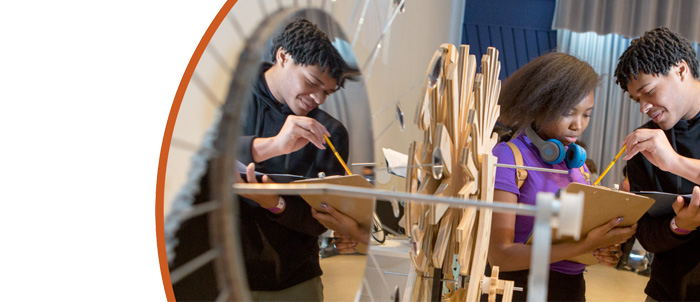Why We Persist: An Intersectional Study to Characterize and Examine the Experiences of Women Tenure-Track Faculty in Engineering
Effective Years: 2015-2020
The ECR program emphasizes fundamental STEM education research that will generate foundational knowledge in the field. Investments are made in critical areas that are essential, broad and enduring: STEM learning and STEM learning environments, broadening participation in STEM, and STEM workforce development. As part of ECR, this project is funded by the Research on Gender in Science and Engineering (GSE) program. GSE seeks to understand and address gender-based differences in science, technology, engineering and mathematics (STEM) education and workforce participation through education and implementation research that will lead to a larger and more diverse domestic STEM workforce. This collaborative project will add to fundamental research in the core area of broadening participation for all women in engineering. It will address the lack of a well-defined body of research methods, studies, and data on the intersection of race, gender, and class among all women. The project will focus on populations that include African American, Hispanic/Latina, Asian/Asian-American, Native American, White, and multiracial women in tenured faculty positions at higher education institutions within the United States. To do this work, collaborative teams of engineering educators, engineers, and social scientists at Purdue University and Vanderbilt University will study challenges and barriers women encounter in engineering. The study will be guided by an intersectional framework that seeks to uncover why engineering faculty from these groups persist despite the challenges that face them based on race, gender, and class.
The proposed study is framed within the institutional (systemic relationships of domination and subordination); symbolic (stereotypical or controlling images); and individual (institutional and symbolic) dimensions of oppression according to Hills Collins' intersectional framework. The project will use mixed methods to identify longitudinal trends in engineering for all women and investigate perspectives about persistence and resilience among the targeted populations. The research will involve descriptive and trend analyses of data collected from 350 institutions by the American Society for Engineering Education, followed a national survey of women selected from the same database. These steps will be augmented by data collected through institutional analyses, a small pilot study, and face-to-face interviews. Interpretation of data culled from these data sources will be triangulated to collectively document unique characteristics, experiences, and factors about oppressions faced by women who persist in engineering. If the outcomes show specific reasons why some women persist, as well as identify barriers to their persistence, the findings could serve as a launching pad for companion studies and the development of interventions. These outcomes could then inform ways to address institutional, symbolic, and individual changes that are fundamental to broadening the participation of all women in engineering.




